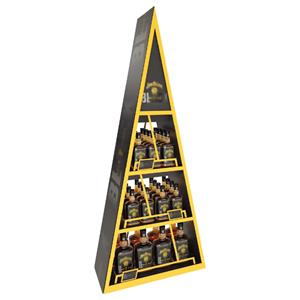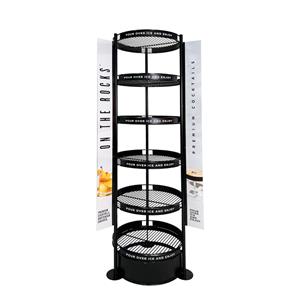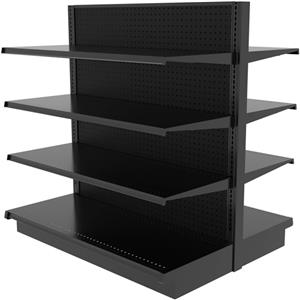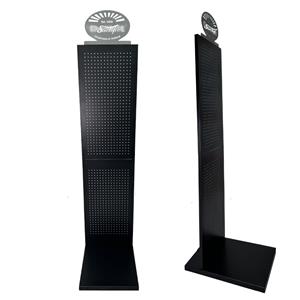Retail Display Racks: Boost Visibility & Sales
Table of contents
1)Introduction
2)Why retail display racks matter for sales growth
3)Key functions: attention, experience, conversion
4)Supermarket display strategies: shelves, refrigerated units, endcaps
5)Warehouse display tactics: heavy-duty shelving, pallet racks, mobile racks
6)Cost-effectiveness through layout optimization
7)The link between design, dwell time, and purchase rate
8)Future-ready racks: smart tech and sustainability
9) Conclusion: Turning fixtures into profit multipliers
10) Sintop Value
In today's fiercely competitive retail market, effectively displaying products has become a crucial factor for success. Retail display racks, as indispensable display tools, not only enhance product visibility but also significantly boost sales performance. This article will delve into the importance of retail display racks and their applications in different settings.

The Role of Retail Display Racks
1. Attracting Customer Attention
The primary purpose of retail display racks is to attract customer attention. Whether in supermarkets, convenience stores, or specialty shops, well-designed display racks make products stand out. By skillfully using elements such as color, shape, and lighting, display racks can capture customers' eyes among numerous products, increasing product exposure.
2. Enhancing Shopping Experience
A good shopping experience can encourage repeat purchases. Retail display racks can effectively organize and display products, making it easier for customers to find what they need. Additionally, display racks can provide relevant product information, such as price and features, helping customers make purchasing decisions.
3. Increasing Product Sales
Display racks not only improve product visibility but also increase sales by promoting impulse purchases. Studies show that about 70% of purchase decisions are made in-store. By placing products in prominent positions, display racks can effectively stimulate customers' desire to buy, boosting sales.
Supermarket Display Racks: Optimizing Product Placement
Supermarkets are one of the most common places for retail display racks. Different types of products require different types of display racks for presentation. Here are some common supermarket display racks and their characteristics:
1. Shelf Display Racks
Shelf display racks are the most common display tools in supermarkets. They usually consist of multiple layers of shelves, suitable for displaying various packaged goods. Through reasonable shelf design, retailers can effectively utilize space, categorizing products to make it easy for customers to find what they need.
2. Refrigerated Display Racks
Refrigerated display racks are primarily used for products that need to be kept fresh, such as dairy products, cold drinks, and meat. Modern refrigerated display racks not only have preservation functions but also use transparent glass doors and internal lighting to make products more attractive to customers.
3. Endcap Display Racks
Endcap display racks are typically placed at the ends of shelves, serving as focal display areas for key products. Due to their prominent positions, endcap display racks are ideal for promoting new products and items on sale. Retailers can use endcap display racks to attract customer attention, increasing product exposure and sales.
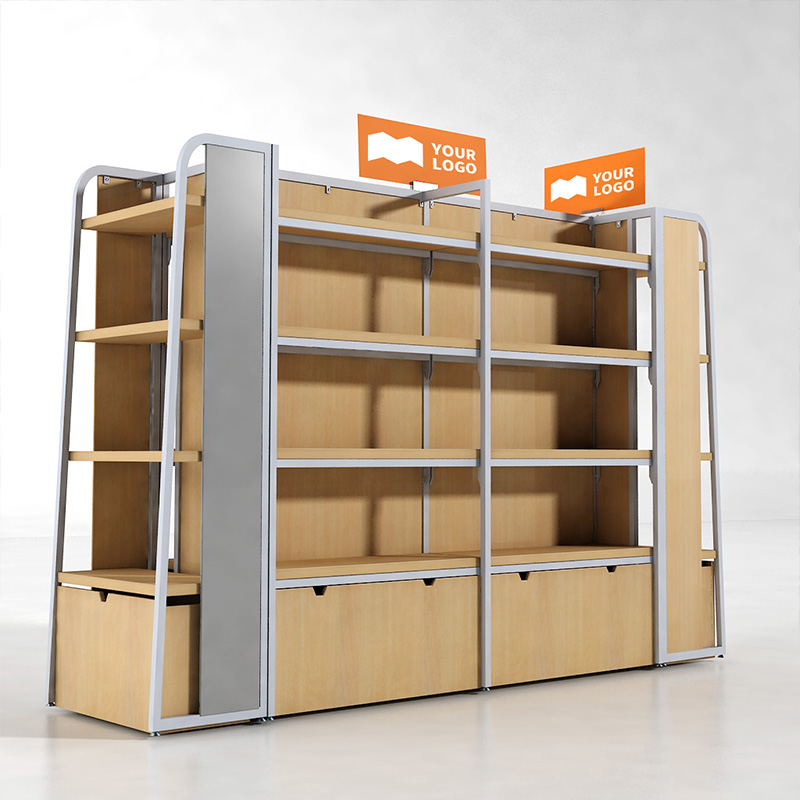
Warehouse-Style Display Racks: Efficient Management of Bulk Goods
In warehouse-style retail environments, display racks need to have not only display functions but also high load-bearing capacity to store bulk goods. Here are some common warehouse-style display racks:
1. Heavy-Duty Shelving
Heavy-duty shelving is typically used for storing large, heavy items such as appliances and furniture. They are made of sturdy metal materials and can withstand substantial weight. Through reasonable shelf layout, retailers can efficiently manage inventory and improve operational efficiency.
2. Pallet Racks
Pallet racks are common storage display tools suitable for items that require frequent handling. Pallet racks are operated using forklifts, allowing for quick and efficient access to products, making them ideal for displaying and storing bulk goods.
3. Mobile Racks
Mobile racks are flexible storage display tools suitable for environments that need frequent adjustments to the display layout. They are usually equipped with wheels for easy movement and repositioning. By using mobile racks, retailers can adjust the display layout as needed, enhancing the flexibility of product displays.
Conclusion
Retail display racks, as important sales tools, play a crucial role in enhancing product visibility, optimizing the shopping experience, and increasing sales. Whether in supermarkets or warehouse-style retail settings, retailers can achieve efficient product display and management through reasonable design and layout of display racks, thereby improving sales performance. In the increasingly competitive retail market, mastering the use of retail display racks will be key to retailers' success.
Sintop Value
At Sintop, we engineer retail display solutions that do more than hold products — they sell them. By combining modular design, premium materials, and industry-specific customization, we help retailers:
Maximize visibility with strategic shelving, lighting, and signage.
Optimize layouts for faster shopping, higher dwell time, and impulse buys.
Adapt to space & category — from supermarket endcaps to heavy-duty warehouse racks.
Reduce lifecycle cost through durable construction, easy reconfiguration, and rental options.
Stay future-ready with smart features: IoT monitoring, AR integration, and eco-friendly finishes.
Sintop turns racks into revenue drivers — making every square foot work harder.

Contact information
Website: www.sintopfixtures.com
Wechat/WhatsApp: +86 15980885084
Email: elly@xm-sintop.com
FAQ
1. What are store fixtures?
Store fixtures are essential equipment and furniture used in retail spaces to display, organize, and store merchandise. Examples include shelving units, racks, display cases, counters, and hooks.
2. Why are store fixtures important?
Store fixtures enhance the shopping experience by organizing products, improving accessibility, maximizing space, and creating appealing displays that attract customers and boost sales.
3. What types of store fixtures are commonly used?
Common types of store fixtures include:
Shelving Units(wall shelves, free-standing shelves, adjustable shelving)
Display Cases (glass cases, countertop cases)
Racks (clothing racks, display racks)
Counters (checkout counters, service counters)
Hooks and Pegboards
End Caps
Signage and Graphics
Mannequins
4. How do I choose the right store fixtures for my retail space?
Consider your merchandise type, store layout, and branding needs. Fixtures should be functional, complement your store's design, and fit within your budget. Evaluate your space to determine the best fixture types and configurations for optimal product presentation and customer flow.
5. Can store fixtures be customized?
Yes, many store fixtures can be customized to align with your store's branding and specific needs. Customization options include materials, colors, sizes, and designs. Collaborating with a fixture supplier or designer can help create fixtures that match your store’s style and functional requirements.
6. How can I maximize space with store fixtures?
Utilize fixtures that optimize vertical space, such as wall-mounted shelves and tall display racks. Modular and adjustable fixtures can adapt to changing merchandise or store layouts. Plan your store layout carefully to ensure efficient use of space and smooth customer flow.
7. How do I maintain store fixtures?
Regularly clean and inspect fixtures to ensure they remain in good condition. Check for wear and tear, and repair or replace damaged parts. Follow manufacturer guidelines for maintenance and cleaning to extend the lifespan of your fixtures.
8. Can store fixtures be used for different types of retail stores?
Yes, store fixtures can be adapted for various retail environments, including clothing stores, electronics shops, grocery stores, and more. The choice of fixtures depends on the specific needs and merchandise of the store.
9. How can store fixtures improve the customer experience?
Well-designed fixtures make products easy to find and browse, enhancing the overall shopping experience. Effective use of fixtures creates an organized, aesthetically pleasing environment that encourages customers to spend more time in the store.
10. Where can I purchase store fixtures?
Store fixtures can be purchased from specialized fixture suppliers, retail equipment stores, or custom fixture manufacturers. Online retailers and local suppliers also offer a wide range of options.

